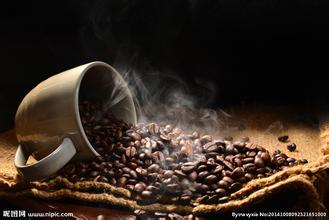Introduction to the method of grinding and calibrating the flavor description and quality characteristics of Colombian Ramon coffee beans
Introduction to Colombia Fine Coffee Beans
Colombia coffee has a silky texture. People equate Colombia coffee with high quality, good taste. It is sour with sweet, low bitter, rich in nutrients, with a unique sour and alcohol taste, Colombia premium coffee acid, bitter, sweet taste of the three just right. Unique fragrance, after drinking, the fragrance fills the whole mouth. And breathe out the aroma of your mouth through your nose
Each kind of caffeine variety origin is different, has its own strong character, for example, masculine strong Mantenin, has the character of a man like steel; mellow fragrance of blue mountain coffee, the most gentle woman miss addiction. And always light aroma of Colombia premium coffee, the most suitable for those who like light sex. Such people do not want to drink coffee as a matter of sitting upright, from sour, sweet, bitter, astringent experience what profound philosophy of life, just want to simply drink a cup of delicious coffee, a cup of hot Colombia coffee, let these people realize that "the best state of life is rich quiet. Quiet, because get rid of the temptation of external fame; rich, because have the treasure of the inner spiritual world." They believe that the greatest happiness in life is to be able to harvest such an incisive interpretation of the state
South America's Colombia is the world's leading coffee producer and exporter. In recent years, due to global climate change, crop production in Colombia has often been affected by factors such as bad weather, which has led to low coffee production. Scientists have been working to develop new varieties of coffee trees in an effort to regain Colombia's status as a coffee powerhouse.
When news of Napoleon I's invasion of Spain reached Colombia in 1808, the people there immediately launched an independence movement. On July 20, 1810, Bogotá erupted in a massive uprising against Spanish colonial rule, arresting the governor of New Granada. In November 1811, representatives of the provinces organized a congress in Bogotá, established the United Provincial Government of New Granada, and declared independence on November 11. But Cundinamarca did not recognize the federation. At the end of 1812, controversy over the formation of the regime eventually led to civil war. In 1814 it broke out again. In mid-1815, a large Spanish expedition arrived in New Grenada. Overthrew the Union provincial government. In May of 16, the Royalists took control of all of New Grenada. In 1815 the Spanish colonists returned. On August 7, 1819, S. Bolivar led the rebels to defeat the Spanish colonial army at the Battle of Boyaca and captured Bogotá on the 10th, thus ending Spanish colonial rule. At the beginning of the 20th century, Colombia's economy developed, coffee and oil production increased, textile and food industries developed, and transportation improved. In November 1903, the United States instigated Panama's independence from Colombia (see Panama Independence). At the same time, the United States and Britain invested heavily in Colombia's oil, railways and coffee and banana plantations, looting Colombia's wealth. After the outbreak of the capitalist world economic crisis in 1929, Colombia's coffee and oil exports decreased, and people's lives became more difficult. In July 1930, the Communist Party of Colombia was founded. In the same year, Liberal E. Olaya Herrera was elected president (1930 - 1934).

Important Notice :
前街咖啡 FrontStreet Coffee has moved to new addredd:
FrontStreet Coffee Address: 315,Donghua East Road,GuangZhou
Tel:020 38364473
- Prev

Introduction of Manor Grinding scale for the description of taste and Flavor of Honduran Coffee
Honduran Coffee Bean introduces what is there to miss about coffee in this volatile country? Honduran coffee does not have very distinctive characteristics. Its biggest feature is that the overall taste is rich and well-balanced. Medium or shallow acidity, giving the impression of obvious but not strong. Sometimes it has a beautiful floral or fruity smell (generally speaking, it is produced in different regions and at different elevations.
- Next

Introduction to the characteristics of Flavor and Taste quality of Yellow bourbon Coffee beans in Queen's Manor of Brazil
Queen's manor de-peeling meat processing system (Coffee processing system): ▌ ripe cherry fruit is picked by hand on the cloth bag to avoid touching the ground. The coffee fruit harvested on that day must be sent to the treatment plant to which the manor belongs for half-sun treatment (Pulped Natural). The coffee fruit is picked by hand and surrounded by cloth, which is to avoid the smell of soil and
Related
- Detailed explanation of Jadeite planting Land in Panamanian Jadeite Manor introduction to the grading system of Jadeite competitive bidding, Red bid, Green bid and Rose Summer
- Story of Coffee planting in Brenka region of Costa Rica Stonehenge Manor anaerobic heavy honey treatment of flavor mouth
- What's on the barrel of Blue Mountain Coffee beans?
- Can American coffee also pull flowers? How to use hot American style to pull out a good-looking pattern?
- Can you make a cold extract with coffee beans? What is the right proportion for cold-extracted coffee formula?
- Indonesian PWN Gold Mandrine Coffee Origin Features Flavor How to Chong? Mandolin coffee is American.
- A brief introduction to the flavor characteristics of Brazilian yellow bourbon coffee beans
- What is the effect of different water quality on the flavor of cold-extracted coffee? What kind of water is best for brewing coffee?
- Why do you think of Rose Summer whenever you mention Panamanian coffee?
- Introduction to the characteristics of authentic blue mountain coffee bean producing areas? What is the CIB Coffee Authority in Jamaica?

